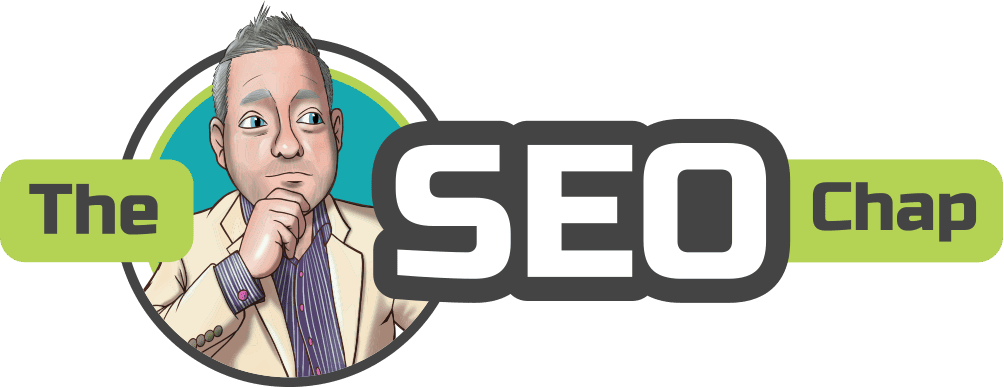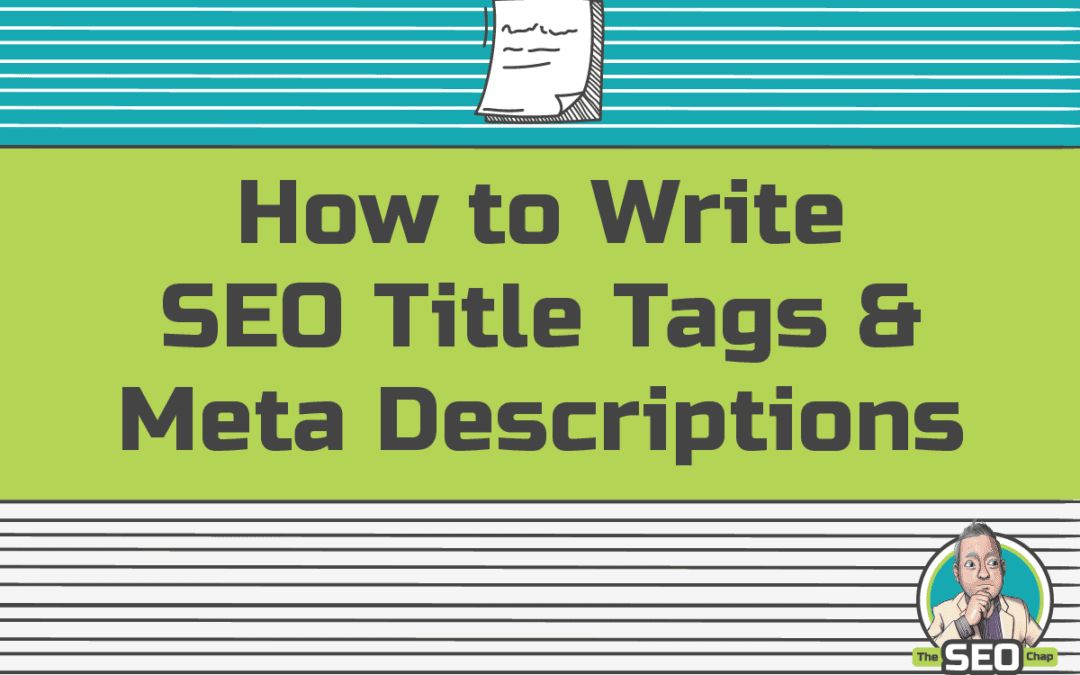Before we delve deep into how to write SEO title tags and meta descriptions, picture this: You’re skimming through Google search results and a particular result catches your attention. Those catchy headlines and brief, inviting descriptions aren’t accidental. They’re the products of well-crafted seo title tags and meta descriptions. Intrigued about harnessing this power for your own website? As a self confessed expert SEO consultant, stay with me as we embark on this comprehensive guide.
How to Write SEO Title Tags
Navigating the expansive landscape of Google search results can often seem like traversing a vast digital ocean. With millions of websites vying for attention, ensuring yours stands out becomes a paramount task. How, then, does one distinguish their website amidst this dense digital thicket?
Enter the domain of Search Engine Optimisation (SEO). At the heart of effective SEO are two pivotal elements: title tags and meta descriptions. These components, when crafted with precision, serve as beacons, enhancing your website’s visibility and appeal to both search engines and potential visitors alike.
Throughout this guide, we will delve into the significance of seo title tags and meta descriptions, illustrating their paramount importance in driving organic traffic and elevating the overall user experience. As we embark on this enlightening journey, you’ll gain insights into harnessing the full potential of these SEO tools to ensure your digital presence is not only visible but impactful. Let’s begin.
The Role of the SEO Title Tag
The title tag can aptly be described as the crown jewel of a webpage’s SEO arsenal. Just as a meticulously crafted billboard draws the attention of passersby, the title tag serves a similar purpose in the digital realm. It beckons and introduces your content to a world of potential visitors, bridging the gap between anonymity and discovery.
For search engines, the title tag is more than just a headline. It’s an informative signpost, offering a concise summary of what lies beneath. Algorithms, particularly those of giants like Google, scour these tags to comprehend, categorise, and rank the content. Thus, a well-optimised title tag can significantly influence how your webpage is perceived and positioned in search rankings.
From the perspective of users, the title tag stands as a promise. It’s the first glimpse, the initial assurance that their query might find its resolution within your content. It sets expectations, and if congruent with the content, can significantly enhance user satisfaction and trust. In essence, the title tag is not merely a functional SEO element but the very linchpin that can determine the trajectory of a user’s journey on your site. As we proceed, understanding how to harness its power becomes imperative for digital success.
Crafting Effective SEO Title Tags
Creating the perfect title tag is an art, blending precision with creativity. It’s the digital equivalent of designing a book’s cover – both an invitation and a promise to potential readers. Here’s a deep dive into the intricacies of fashioning a compelling title tag:
- Length: The 50-60 character range is not an arbitrary recommendation but is rooted in how search engines display results. Staying within this range ensures your title is displayed in its entirety, capturing the essence of your content without truncation. Straying too far beyond may lead to vital information being cut off, potentially diminishing the impact of your message.
- Relevance: A title tag should serve as an accurate reflection of the content it represents. Misleading or clickbait-oriented titles might draw initial clicks but will invariably lead to increased bounce rates as users feel deceived. It’s essential to strike a balance between being compelling and honest in your title formulation.
- Keyword placement: Positioning your primary keyword closer to the beginning of the title not only aligns with search engine algorithms’ preferences but also immediately informs users about the core focus of your content. This strategy ensures relevance and maximises engagement potential from the very first glance.
- Branding: Incorporating your brand into the title tag can be a strategic move. For businesses or platforms with established reputations, this can lend credibility to the content. Moreover, it fosters brand recall, ensuring that users associate quality content with your brand over time.
- Avoiding duplication: It’s vital to treat each page on your website as a distinct entity. Repetitive or duplicated seo title tags can confuse search engines and users alike, diluting the potential impact of your content. Ensure each title is tailored to the specific content and intent of its respective page.
- Examples:
- Good: “Organic Dog Food: Top 10 UK Brands for a Healthy Pooch | PetPals” – This title is succinct, relevant, introduces a primary keyword, and seamlessly integrates branding.
- Needs improvement: “Best dog foods, top 10 foods, organic brands” – While this title introduces relevant keywords, its repetitive nature and lack of clear structure can diminish user engagement and clarity.
In summary, the crafting of a title tag demands both analytical thinking and creativity. It’s about understanding your audience’s needs, aligning with search engine preferences, and presenting your content in the most compelling light. As with any craft, practice, refinement, and feedback are crucial to mastering the art.

The Role of the Meta Description
In the vast digital marketplace, where every detail can make or break a user’s decision, the meta description serves as a vital ambassador for your content. Delving deeper into its significance:
- The Elevator Pitch: Imagine you’ve briefly encountered someone in an elevator and you have just a few moments to explain a concept or sell an idea. That’s your meta description. While the title tag grabs attention, the meta description persuades. It’s a concise summary, offering potential visitors an enticing glimpse into what your page offers.
- Not a Ranking Factor, but…: It’s a common misconception that meta descriptions directly influence search rankings. They don’t. However, their indirect impact is undeniable. A well-crafted meta description can significantly boost the click-through rate (CTR). A higher CTR often signals to search engines that your page is valuable and relevant to search queries, potentially influencing rankings in a roundabout way.
- Setting Expectations: A meta description should encapsulate the essence of your content in a nutshell. When users read it, they form an expectation of what they’ll find on the page. If the content aligns with this expectation, it enhances user satisfaction, reduces bounce rates, and fosters trust.
- Influencing User Decisions: In the split-second decisions users make while skimming search results, a compelling meta description can be the deciding factor between clicking on your site or a competitor’s. It’s your opportunity to communicate the unique value and relevance of your content.
In essence, while the title tag heralds your page’s presence, the meta description delves deeper, urging the user to explore further. Think of it as the blurb on the back of a book or the synopsis of a film. It hints at the adventure within, coaxing the user to take that next step into your digital domain.
Crafting an Effective Meta Description
The meta description is akin to a backstage pass, offering a sneak peek behind the curtains, setting the stage for what the main event – your content – has in store. Let’s dissect the components of a captivating meta description:
- Length: A meta description is a brief narrative, not a novel. The ideal span of 150-160 characters ensures you convey a crisp, concise message while still providing meaningful insights. Exceed this, and you risk your message being truncated; go too short, and you might not convey enough value.
- Relevance: Your meta description should be a tantalising teaser of your content. It’s about striking a balance: revealing just enough to intrigue the audience, yet retaining an air of mystery, prompting users to delve deeper into the full story on your page.
- Keyword Inclusion: While meta descriptions don’t directly impact rankings, the presence of relevant keywords can resonate with users, reinforcing the relevance of your page in relation to their search queries. The key is to integrate both primary and secondary keywords organically, ensuring the narrative remains fluid and natural.
- Call to Action (CTA): Just as a storyteller or salesperson might conclude with a compelling closing statement, your meta description benefits from a clear, inviting CTA. This isn’t about being overtly salesy; it’s about gently guiding users, encouraging them to explore, learn more, or take a specific action.
- Avoiding Generic Descriptions: The digital world is saturated with content. Generic, one-size-fits-all descriptions can blur into the background noise. Every piece of content has a unique value proposition, and your meta description should mirror that distinctiveness. Tailor each description to the specifics of its corresponding content.
- Examples:
- On the mark: “Explore the top 10 organic dog food brands in the UK. Provide your furry friend with the nutritional best!” – This description is succinct, relevant, instils curiosity, integrates keywords seamlessly, and concludes with a compelling invitation.
- Missing the mark: “Best organic dog food. UK brands. Buy now.” – Although this incorporates keywords, its disjointed structure and lack of a narrative arc can make it less appealing to users.
In summary, crafting an impeccable meta description is about marrying the art of storytelling with the precision of marketing. It’s your chance to appeal, entice, and engage potential visitors, ensuring they not only notice your content but feel compelled to immerse themselves in it.
Tools to Optimise Your Title Tags and Meta Descriptions
In the ever-evolving digital landscape, tools play a pivotal role in ensuring your SEO efforts are both effective and efficient. Whether you’re fine tuning the nuances of your content or gauging its prospective impact, these instruments can provide invaluable insights and guidance. Let’s delve into some of the most essential tools for optimising title tags and meta descriptions:
- SERP Preview Tools:
- What they do: These tools emulate how your title tag and meta description will appear in the search engine results page (SERP). It’s essentially a mockup, helping you visualise your content’s appearance in the real-world context of search results.
- Why they’re invaluable: Visual representation aids in ensuring your title and description fit seamlessly within the character limits, preventing unwanted truncations. Moreover, by offering a preview, they provide an opportunity for marketers and content creators to make aesthetic and strategic adjustments before going live.
- Recommended tools: Moz’s SERP Preview Tool and Portent’s SERP Preview Tool are two popular choices among SEO professionals.
- Character Count Tools:
- What they do: As the name suggests, these tools precisely measure the number of characters in your title and description.
- Why they’re invaluable: They act as a safeguard, ensuring you remain within the recommended character limits for both title tags and meta descriptions, thus preventing any unexpected cut-offs in SERP displays.
- Recommended tools: Websites like charcounter.com or browser extensions such as Word Counter Plus can be useful here.
- Keyword Research Tools:
- What they do: These tools provide insights into the search queries users are inputting into search engines. They help identify primary and secondary keywords, search volume, competition, and even suggest long-tail keywords.
- Why they’re invaluable: Tapping into real user queries ensures your content aligns with genuine user intent. By incorporating the right keywords into your title tags and meta descriptions, you enhance the relevance and appeal of your content.
- Recommended tools: Platforms like SEMrush, Ahrefs, and Google’s Keyword Planner are among the top choices for thorough keyword research.
To wrap it up, while intuition, creativity, and expertise form the foundation of effective SEO, leveraging the right tools can amplify your efforts, offering clarity, precision, and insights. They bridge the gap between guesswork and data-driven decision-making, empowering you to craft title tags and meta descriptions that resonate and perform.
Best Practices and Common Mistakes
As we draw towards the end of our deep dive into title tags and meta descriptions, let’s succinctly summarise the best practices and highlight some common pitfalls. A reminder can reinforce understanding and ensure your SEO efforts remain on the right track.
Best Practices Recap:
- Tailored Relevance: One of the cornerstones of effective SEO is ensuring that every piece of content, and consequently, every title tag and meta description, is tailored to its unique subject matter and audience. Think of it as a bespoke suit; it should fit just right, highlighting the strengths of the content it represents.
- Keyword Integration: Keywords are essential, yes, but it’s about integration, not inundation. Seamlessly weave them into your title tags and meta descriptions, ensuring they complement, rather than dominate, the narrative.
- Maintain Individuality: Every page on your website serves a unique purpose and addresses a distinct topic or query. Reflect this individuality in its title tag and meta description. Repetition not only confuses search engines but can also dilute the user experience.
Common Mistakes to Avoid:
- The Lure of Keyword Stuffing: In a bid to rank higher or cover more ground, there might be a temptation to cram as many keywords as possible into your title tags and meta descriptions. Resist this siren call. Overstuffing not only diminishes readability but can also result in penalties from search engines.
- Vague Descriptions: Ambiguity is the enemy of engagement. Descriptions that are too broad, generic, or fail to encapsulate the essence of your content can be detrimental. They neither entice the user nor offer a clear picture of what to expect, resulting in potential missed opportunities.
- Over-Promising and Under-Delivering: Ensure that your title tags and meta descriptions set accurate expectations. Promising something in the meta and not delivering in the content can lead to increased bounce rates and diminished trust.
In essence, while SEO involves a myriad of technical intricacies, at its heart lies the principle of genuine value and clarity. Prioritise your audience’s needs and expectations, maintain honesty in your content representation, and continuously refine based on feedback and results. Avoid shortcuts and remember: in the realm of SEO, authenticity and diligence always pay dividends.
Conclusion
In a world that’s increasingly online, the little details matter. Your title tags and meta descriptions serve as your virtual shop window. When optimised correctly, they can beckon users into your digital domain and potentially convert them into loyal visitors.
Now, fellow digital explorers, The SEO Chap says it’s your turn to weave this magic. Try your hand at perfecting your title tags and meta descriptions and share your journey. Got insights or questions? Pop them in the comments. And if want support on an SEO audit, or you’re keen on further refining your SEO strategies, contact me.
Till next time, keep those digital flags flying high! 🚀


